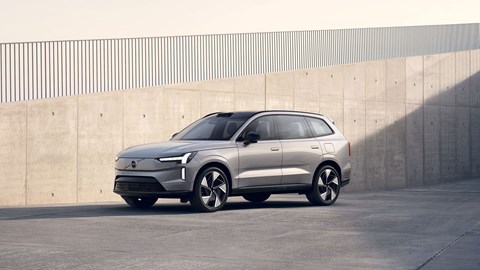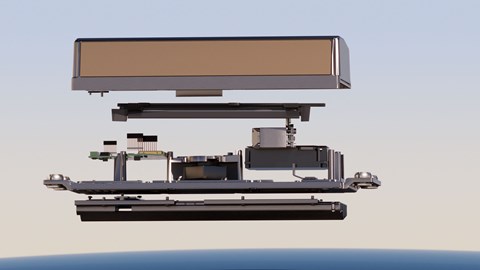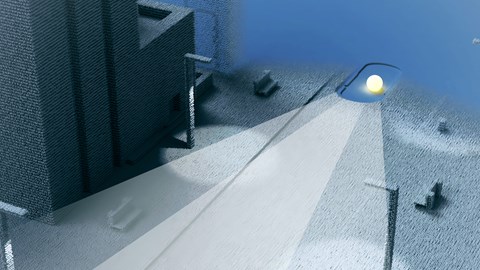► Volvo’s autonomous plans
► The EX90 has the hardware already
► The aims of a digital seatbelt
The combination of wildly powerful silicon chips, lidar and in-house perception software is ‘the digital three-point seatbelt’ according to Volvo CEO Jim Rowan, and promises a 20% reduction in accidents resulting in death or serious injury. Volvo famously invented the seatbelt, back in the ’50s, an innovation that’s since saved hundreds of thousands of lives.
On the day Volvo unveiled the EX90, a £100,000 flagship EV it bills as hardware-ready for autonomous travel, Rowan wouldn’t be drawn on when, exactly, Volvo would go live with hands-off-the-wheel driving – only that it would be ‘within a reasonable timeframe’, and that the barrier was firmly ‘regulatory’.
What are the levels of autonomous car?

We’ve been here before, of course. Many times. But what’s different this time around, according to Volvo and its partners at least, is that the hardware, software and processing power are now up to the task. Where many existing collision mitigation systems are pretty hopeless, triggering needlessly and failing to cope with so-called ‘edge’ events, the EX90’s spec moves us one step closer to napping-on-the-M25 utopia.
‘The perception stack, the hardware we’re using, and the software that we write, will allow us to kick up through the metaphorical gears all the way to autonomous driving,’ says Rowan. It’s these developments that give him confidence – key given Volvo has a cast-iron safety reputation to protect.

‘We’ll continue to improve our assistance system, Highway Pilot, and then, where legislation allows, we can move to full autonomous driving,’ continues Rowan. ‘But here’s the nub of it. We’re using the Nvidia chipset, and really for the first time car companies are starting to understand silicon. You have the application layer – lidar, cameras, and sensors – and the software that connects that to the silicon. And that [the software] is the part we really care about. For us, that’s the digital seatbelt, quite frankly. So, we write that. I’ve set up a team of over 700 people that write the perception and sensor fusion software. That’s something we think is absolutely core.’

Austin Russell, CEO of Luminar, the firm suppling the EX90’s lidar array, is adamant the technology represents a step-change.
‘We’re talking about a reaction time of one tenth of a second – it’s superhuman,’ he says. ‘We’re talking about a 700% increase in the number of collisions this system can avoid. You’d think we’d have solved this issue – of cars running into things – by now but that’s not the case. Cameras and radar systems aren’t perfectly accurate detection system. They’re slamming on the brakes all the time at nothing and then cruising on through when there is something there. The key with lidar is that you can trust it. For the first time now we’re in a place where, if it says, “Look out!” there really is something there.’